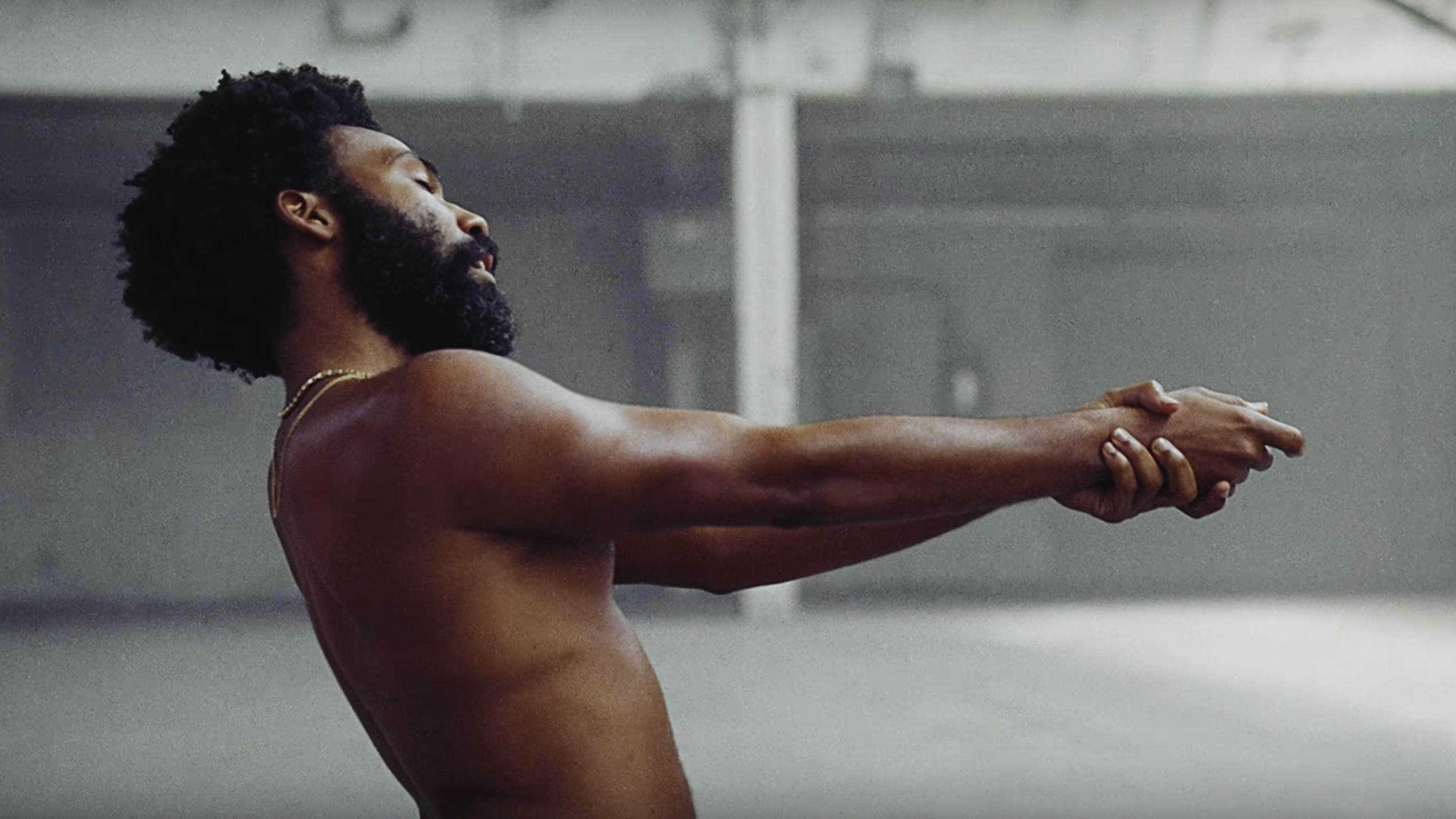
Welcome to Donald Glover's America
I don’t know if there’s a correct way to interpret Childish Gambino’s “This Is America” video, because holy shit. And with respect to all the random, search engine-motivated online takes that’ve surfaced since the song and video dropped during Donald Glover’s Saturday Night Live hosting gig on May 5, I’m not sure people realize what we really experienced: Donald Glover’s complete arrival and takeover.
And being that it came not long after Trayvon Martin’s murderer was finally, expectedly acquitted, and very soon after unarmed black teenager Michael Brown was gunned down in Ferguson, Mo., the “Never Catch Me” video was a timely, meaningful reminder of what is promised to me and many other people whose complexion is just dark enough to be threatening to America: shade. And sure enough, it was Hiro Murai—frequent director for Glover's FX series, Atlanta—who helmed both the FlyLo video and “This Is America.”
With this, Donald Glover’s cultural takeover of our country is now complete. Nobody’s hotter, and nobody else controls the moment, momentum and message like the multitalented Stone Mountain, Ga., native.
Donald Glover is aware of what Kanye West could/should represent today, and he’s keen of the black hole that the man who made My Beautiful Dark Twisted Fantasy left behind.
Donald Glover is different. He’s aware of what West could/should represent today, and he’s keen of the black hole that the man who made My Beautiful Dark Twisted Fantasy left behind. And as we know in America, the law of the land is, “Finders, keepers.” (Just ask any nearby Native American, if someone hasn’t already called the police to have them escorted away.)
We know Glover gets it because he has Childish Gambino flexing in a way that makes it hard to tell if he’s showing solidarity with “trap” music, or if he’s secretly judging it by using it to tell a story that doesn’t even require the song. The first time I saw the video, I forgot to hit the un-mute button on YouTube, and I didn’t know I’d missed a thing, but was still overwhelmed by what I’d seen. Then I realized, and turned up the volume. After that, I was convinced that West, unlike the black lives we see slaughtered in “This Is America,” no longer matters. And maybe that’s what he deserves after playing the MAGA marketing card, when there are enough brilliant representations of black excellence that we’re all starting to see that the only thing Yeezus saves is himself.

Childish Gambino is a vehicle. Donald Glover has used him to show us how to swag surf, in surreal ATL style, in the face of reality. But sooner or later, unlike the Flying Lotus video Hiro Murai also directed, it all catches up to you, as we see in the end of “This Is America,” as Glover/Gambino runs frantically from an approaching crowd. Maybe this is his message to America, as told through the signals—dances, guns, facial expressions, etc.—communicated through an unbelievably great video. You can dance all you want, but there’s ultimately nowhere to run, and nowhere to hide, not even underneath a MAGA hat.







